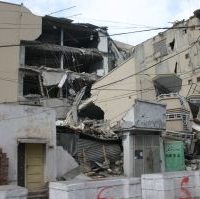How Open Source Software Helps after a Disaster

Many are still shaken after Monday’s tragic attack at the Boston Marathon, but those with friends and/or family attending the April 15, 2013, race were able to locate their loved ones far more quickly than after disasters in the past—thanks to Google’s Person Finder.
Google's Person Finder, one of the Google tools that make up their Crisis Response project, enables people to locate those who may be missing. It is completely open source, allowing developers to customize it to precisely fit the needs of any disaster.
Google’s humanitarian tool, released in 2010, was first used after the Haiti earthquake, but Google was not the first to develop such a product, especially one that is open source, for the benefit of its users. Sahana released their Disaster Management System after the 2004 Sri Lanka tsunami that killed more than 230,000 people.
Sahana's and Google’s offerings are examples of Humanitarian Free and Open Source Software (H-FOSS). The Humanitarian FOSS Project was organized in 2007 with the undeniably noble goal of building "a collaborative community of educational institutions, computing organizations, and social service agencies engaged in the development of socially useful, open-source software."
The recently released Linux Foundation annual survey shows that from 2010 to 2012 the number of open source projects made a greater jump than in any previous year. By 2014, the numbers are projected to nearly double those of today.
Leslie Hawthorn at Red Hat explains in the video below how municipalities are opening their public records to H-FOSS projects after seeing the immediate and free aid that they provide to areas in need.
A list of additional highly rated crisis management apps, many of them are free, can be found here.

